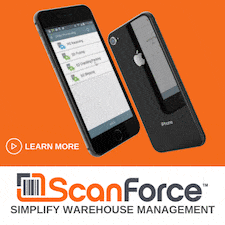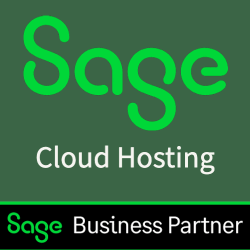When it comes to accessibility and easy use of data, integrated accounting software makes sense. However, the term integration is often misused, and it is difficult to get people to agree on one definition.
In this article, we'll take a closer look at 3 main types of Accounting Software Integration.
In this article, we'll take a closer look at 3 main types of Accounting Software Integration.
3 Software Integration Options
Integration can quickly turn to chaos if misunderstood or used to mask the reality of what is going on in a company’s financial management system. Reliance on too many siloed apps, miscommunication between different teams who need to use the software, insufficient power to manage volume, and unprofessional setups all play havoc with efficient use.
Three main types of accounting software integration exist. They include:
1. Native
2. API
3. Import/Export
To reap the benefits of effective accounting software integration, it's important to understand what each of these integration options mean. Then, make smart decisions that allow for the best and most seamless use of necessary data and functions across the board.
Three main types of accounting software integration exist. They include:
1. Native
2. API
3. Import/Export
To reap the benefits of effective accounting software integration, it's important to understand what each of these integration options mean. Then, make smart decisions that allow for the best and most seamless use of necessary data and functions across the board.
Native Integration
The term ‘integration’ encompasses a variety of definitions, but most point to inclusion, coordination, and access for all.
With native integration, two or more software applications or software systems exist on the same device or platform. Everyone using the platform can access and use the apps. This method is marginally inclusive and coordinated with your organization and uses the same platform for everyone who needs to access a specific data set or functionality.
In a way, it is much like having multiple pieces of software on a single computer or your smartphone. The apps integrate because they are physically and digitally housed in the same structure. Coordination and access are therefore simple.
Many people consider native accounting software integration to be the best option due to:
Security
Data stored in-house or on trusted cloud or external servers that is not accessible by multiple systems tends to have better security. There are fewer potential weak spots.
Accuracy
With native integration comes a reduced chance of errors from faulty connections or users unaccustomed to the app or system. Each app is backed up by the developer to a high degree.
Cost-Savings
Most apps and SaaS solutions come packaged with native integrations built-in. You do not have to pay extra for use for the whole package.
With native integration, two or more software applications or software systems exist on the same device or platform. Everyone using the platform can access and use the apps. This method is marginally inclusive and coordinated with your organization and uses the same platform for everyone who needs to access a specific data set or functionality.
In a way, it is much like having multiple pieces of software on a single computer or your smartphone. The apps integrate because they are physically and digitally housed in the same structure. Coordination and access are therefore simple.
Many people consider native accounting software integration to be the best option due to:
Security
Data stored in-house or on trusted cloud or external servers that is not accessible by multiple systems tends to have better security. There are fewer potential weak spots.
Accuracy
With native integration comes a reduced chance of errors from faulty connections or users unaccustomed to the app or system. Each app is backed up by the developer to a high degree.
Cost-Savings
Most apps and SaaS solutions come packaged with native integrations built-in. You do not have to pay extra for use for the whole package.
Integration Through API
An application programming interface - or API for short - is the most common type of software integration used in most organizations. Instead of keeping everything contained within a single device or system, it uses a series of “data tunnels” to transfer information between multiple apps. These are pre-built specifically to function within the company’s needs.
Many apps used today have an API that allows it to be used on diverse platforms. This makes them incredibly attractive to software companies not associated with the original app development. It is a way of welcoming diverse solutions together to improve integration possibilities even more. If a developer can connect their accounting management software to another essential app already being used, it makes it so much more attractive for everyone involved.
This type of software integration allows for seamless data sharing and use, increased automation possibilities, and a more user-friendly process for people at every level. Everyone who has ever used a computer or smartphone has interacted with an API. It is simply a way to transport data requests and results quickly and securely.
Many apps used today have an API that allows it to be used on diverse platforms. This makes them incredibly attractive to software companies not associated with the original app development. It is a way of welcoming diverse solutions together to improve integration possibilities even more. If a developer can connect their accounting management software to another essential app already being used, it makes it so much more attractive for everyone involved.
This type of software integration allows for seamless data sharing and use, increased automation possibilities, and a more user-friendly process for people at every level. Everyone who has ever used a computer or smartphone has interacted with an API. It is simply a way to transport data requests and results quickly and securely.
Import/Export
The third type of integration that we'll look at is considered old-fashioned by some developers and organizations today. This requires human intervention to download a CSV file from one app and upload it to another one that can use the data contained within. There are also software solutions that automatically take care of this process. These often use cloud processing, but some-in-house systems can exist.
Although primitive, import/export integration works well if you avoid human error during the process. That, however, is a real issue that more modern, digital solutions overcome. Also, it does not allow for real-time data sharing or processing. Any delay in this process can impact the function of an accounting department or any company’s bottom line.
Although primitive, import/export integration works well if you avoid human error during the process. That, however, is a real issue that more modern, digital solutions overcome. Also, it does not allow for real-time data sharing or processing. Any delay in this process can impact the function of an accounting department or any company’s bottom line.
Which Software Integration Option is Best?
The idea of choosing a custom solution specific to your company makes sense when it comes to software itself, but integration is another story. For ease-of-use, security, and cost, native integration tops the list. However, this is only true if you can find all the apps you need on a single platform. A costly solution is to have a bespoke configuration developed by software engineers. This is not applicable, affordable, or necessary for most companies.
The next best thing is API software integration. In fact, due to its amazing availability and usability, this is by far the most popular for small to mid-sized businesses (SMBs) and similar organizations. You can use the most popular and recommended apps integrated with your system seamlessly. Users without technical knowledge will never have a problem accessing the data or using it to perform their work responsibility.
Import/export is a last resort these days. If you do opt for this classic integration option, you need to put many internal controls in place to prevent human error as much as possible. Also, recognize that your organization will not be able to integrate easily with up-to-date apps that your competitors benefit from.
Out of these three accounting software integration options, our software consultants recommend APIs which link together the best individual apps available today. While this list of apps differs for each company and the specific functions you require, there is no doubt that the omnipresence of built-in APIs makes everything simple. Software development brands understand this and do everything they can to make their solutions attractive to companies like yours who seek out the most streamlined, secure, and powerful options.
The next best thing is API software integration. In fact, due to its amazing availability and usability, this is by far the most popular for small to mid-sized businesses (SMBs) and similar organizations. You can use the most popular and recommended apps integrated with your system seamlessly. Users without technical knowledge will never have a problem accessing the data or using it to perform their work responsibility.
Import/export is a last resort these days. If you do opt for this classic integration option, you need to put many internal controls in place to prevent human error as much as possible. Also, recognize that your organization will not be able to integrate easily with up-to-date apps that your competitors benefit from.
Out of these three accounting software integration options, our software consultants recommend APIs which link together the best individual apps available today. While this list of apps differs for each company and the specific functions you require, there is no doubt that the omnipresence of built-in APIs makes everything simple. Software development brands understand this and do everything they can to make their solutions attractive to companies like yours who seek out the most streamlined, secure, and powerful options.
Guest Article by Clear Cloud One
This guest article is provided by Clear Cloud One, a Sage Intacct Partner and software integration specialist.
The team at Clear Cloud One tackle the challenges that so many businesses face including the struggle to keep server-based software updated; the need to scale without adding headcount; and removing time-wasting and error-prone manual processes.
By building a connected business platform, they help companies grow fast, simplify operations, and minimize staff.
The team at Clear Cloud One tackle the challenges that so many businesses face including the struggle to keep server-based software updated; the need to scale without adding headcount; and removing time-wasting and error-prone manual processes.
By building a connected business platform, they help companies grow fast, simplify operations, and minimize staff.




